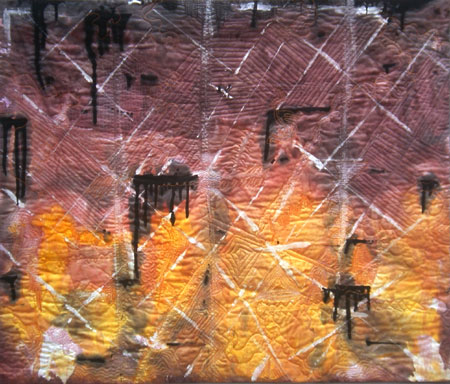
I’ve not posted here for the last month, as I’ve been deep into computer management issues. Creativity has been at a low ebb, as has been anything cogent to say about the process. But I’m on the road now, which always gets me creatively engaged with my surroundings.
We’re visiting friends on Salt Spring Island, which is between the BC mainland and Vancouver Island. The hills and sea coves are spectacular, of course. Walking with friends at Ruckle Provincial Park, I explored the woods and beach with my camera as they conversed. I felt like the off leash dog lingering behind to check out the compelling scents along the trail.
Washed up on the rocky coast, with all the other woodsy flotsam, was a huge stump with its ring of roots, whitened by many seasons in the sun. I’m a sucker for these sorts of things. No matter that this is a well worn rut in photographic explorations–the reason photographers are attracted to eroded rocks and convoluted trees is that they’re interesting natural forms to stare at. I am not above joining the fray, so long as I get to do it in relative solitude.
The more I started poking around this stump, the more I appreciated how this was one of the more complex shapes in a natural object that I had encountered in awhile. By taking pictures of it, sitting in it and looking, and looking, and extracting more shapely photographs, and looking some more, I got to “know” this thing. I crawled in close, and I backed off and saw how it sat in the larger landscape. I began a relationship.
We had about 30 minutes together, this stump and I. Most people, and me in another mood, would have walked by, glanced at the stump, thought, hey, that’s cool looking, and gone on their way. The camera was an excuse to linger and really feel what this spot was like for the duration.










